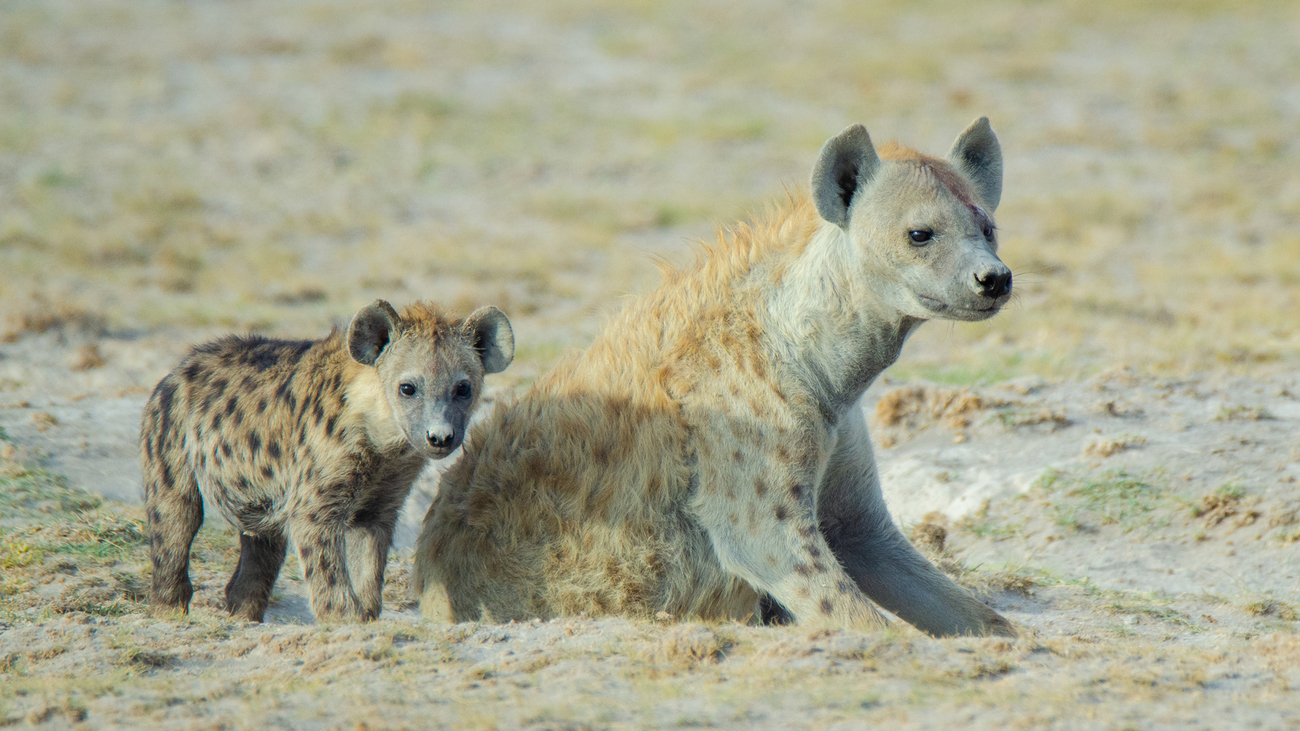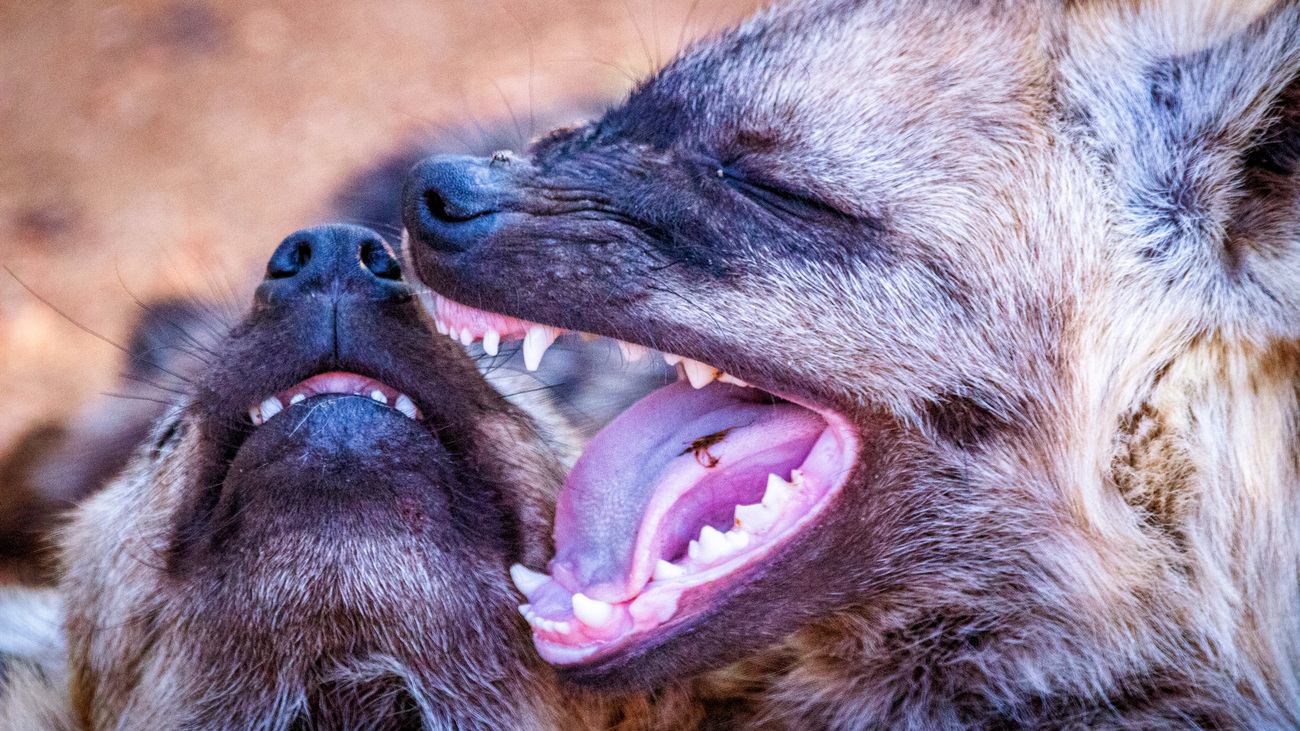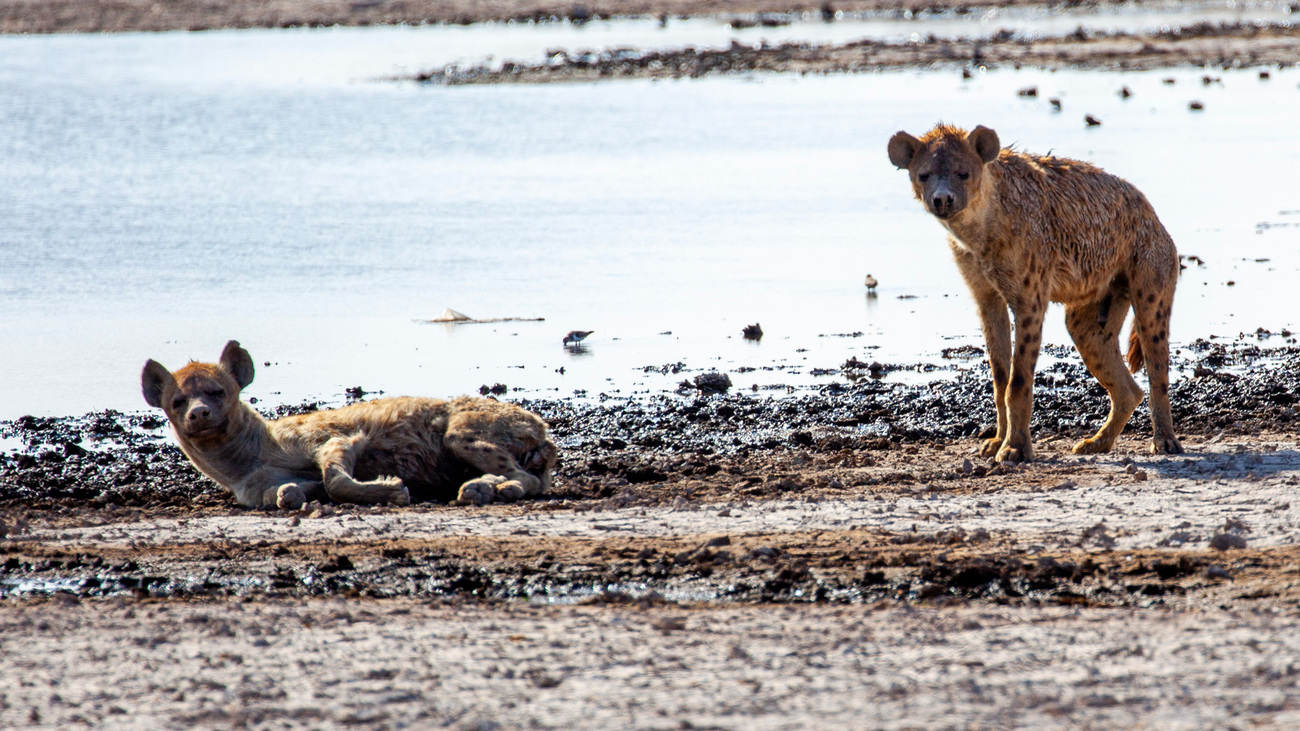Hyenas
What is a hyena?
There are a lot of myths, folklore, and superstitions surrounding hyenas. Thought to be infamous scavengers, some cultures paint them as grave robbers or deceiving, cunning predators because they steal prey from other animals. They are even portrayed as such in popular culture. While these characterizations may seem innocent on the surface, they have fuelled a strong fear and dislike of hyenas, which has led to increasing wildlife-human conflict—a conflict that now threatens hyena populations in the wild.
Much of the hate towards hyenas has grown from misunderstandings and exaggerations. For instance, while two species of hyena—the striped hyena and brown hyena—do scavenge food from predators, the spotted hyena and aardwolf rarely do. The former hunts prey of all sizes, from small rabbits to 800-kilogram (1,800-pound) buffalos, while the latter lives on termites. It’s also worth noting that nearly all predators scavenge opportunistically, not just hyenas.
Hyenas are nocturnal and have interesting social structures. Their clans are led by a female matriarch, mostly because hyena females have three times more testosterone than males, meaning they are physically stronger and have more aggressive temperaments. The highest-ranked individual in a hyena clan is the alpha female, followed by her cubs. Female hyena cubs inherit power and social status from their mothers, similar to a monarchy.
Other misconceptions about hyenas include their demonic laugh and bad smell. While the spotted hyena does have a vocalisation that sounds a bit like laughter, it’s actually used by lower-ranking clan members to express stress or fear. And the belief that they smell bad is simply the result of old stories that hyenas dig up the graves of the dead—which they don’t.
The anatomy of the female spotted hyena has also fuelled their poor reputation over the years. Mislabeled as hermaphrodites, the high levels of testosterone in female spotted hyenas cause them to have a ‘pseudopenis’. They use it to urinate and mate like a male, but they also give birth through it. This has historically been described as unnatural and unclean.
The truth is, however, that hyenas are exceptionally successful predators and extremely important to the health of their habitats. They help control the populations of multiple prey species and prevent the spread of disease by finding and eating every last part of animal carcasses.
What is a hyena’s scientific name?
Here are the scientific names of the four hyena species:
- Spotted hyena (Crocuta crocuta)
- Striped hyena (Hyaena hyaena)
- Brown hyena (Parahyaena brunnea)
- Aardwolf (Proteles cristata)
Are hyenas endangered?
The striped hyena and brown hyena are both classified as near threatened by the IUCN, while spotted hyenas and aardwolves are listed as least concern.
Striped hyenas have an estimated population of 5,000 to 9,999 mature individuals across their entire range, while there are around 4,365 to 10,111 mature brown hyenas.
Unfortunately, human-wildlife conflict is one of the biggest threats to hyenas because they have a reputation as aggressive predators, persistent scavengers, and threats to human life. They’re also affected by a decrease in their prey species—who are themselves affected by habitat loss—which makes it harder for them to find food.
Where do hyenas live?
All hyena species live in Africa, but the striped hyena can also be found in parts of the Middle East and India. They inhabit a variety of habitats, including dry woodland, semi-desert, savannah, and mountains. They can even survive in human cities—though this doesn’t happen often.
Spotted hyena habitat
Spotted hyenas live in sub-Saharan Africa. They can be found in most African countries in this area, except in the Congo Basin and South Africa. They tend to live in forests, savannahs, and grasslands, including protected areas.
Brown hyena habitat
Brown hyenas live in the most southern countries of the African continent, including Namibia, Botswana, Zimbabwe, and South Africa. They prefer dry areas such as open woodland savannah and mountainous areas, and they can often be found along the coast. This species can also survive in urban areas.
Aardwolves habitat
Aardwolves have two populations in Africa, one that lives in East Africa in countries including Ethiopia, Kenya, and Tanzania, and one that lives in the south around Namibia, Botswana, Zimbabwe, Angola, and South Africa. They prefer shrubland, savannah, and grassland.
Striped hyena habitat
Striped hyenas live in North Africa, including in Egypt, Algeria, Niger, Chad, Sudan, Ethiopia, and Libya. But they are also the only species found outside of Africa, inhabiting parts of Saudi Arabia, Iran, Turkey, Syria, Jordan, Afghanistan, Pakistan, and India. They usually live in savannahs, forests, shrublands, grasslands, and wetlands.
Threats
The biggest threats to all hyena species are human-wildlife conflict and habitat loss.

Human-wildlife conflict
Seen as dangerous predators and persistent scavengers, hyenas are persecuted throughout their ranges. They are eradicated in human-populated areas through shooting, spearing, trapping, and poisoning. Wire snares kill around 400 spotted hyenas per year, for example.
In some areas—like the Middle East—people are encouraged to kill hyenas on sight, even when they’re not damaging farms or livestock. Some hyena body parts are also used in traditional medicine.
Aardwolves are the only hyenas that aren’t significantly affected by human-wildlife conflict because it is well-understood that they only feed on termites.
Habitat loss
Hyenas are highly adaptive and live in many types of habitat—even cities, in some cases. However, the same cannot be said for the prey species they eat. Increased human settlement and loss of habitat are causing decreasing numbers of the species hyenas prey on or scavenge, such as wolves, cheetahs, leopards, lions, and tigers. As such, they are struggling to find the food they need to survive.
FAQs
Are hyenas dogs?
Hyenas might look like a type of dog but they’re actually considered feliforms. The order Carnivora is split into two groups: the cat-like Feliformia and the dog-like Caniformia. So, though we might expect hyenas to be on the dog-like side, they’re actually on the cat-like side. Fossils from around 29 million years ago suggest that hyenas shared a common ancestor with other feliforms.
What is a hyena’s bite force?
The spotted hyena has the strongest bite of any carnivorous mammal on the planet. Their bite force is 4,500 Newtons or 458 kilograms (1,011 pounds) of force.

How big are hyenas?
Hyenas weigh 35 to 80 kilograms (77 to 176 pounds) on average, depending on the species and sex of the individual. They can measure anything from 90 to 150 centimeters (37 to 60 inches) long and 75 to 85 centimeters (30 to 33 inches) tall at the shoulders.
Do lions eat hyenas?
Lions don’t typically eat hyenas, but they do kill them. Spotted hyenas and lions often compete for the same food in the same places which leads to conflict. Lions will even attack hyena dens during the night to kill cubs and reduce the competition for food.
Lions are around twice as big and three times as heavy as hyenas, so hyenas usually can’t take on healthy, full-grown lions. They can, however, target cubs and elderly individuals to reduce the competition for food.
Other species of hyena usually wait patiently for lions to finish their food before moving in to take the scraps, and there’s often much less conflict in these situations.
Why do hyenas laugh?
The most common noise hyenas make is called a ‘whoop’. It’s used to call extra recruits during a fight, communicate locations, or even just to show off.
Spotted hyenas also have their own unique vocalisation, which we refer to as a laugh. But this sound doesn’t convey any positive feeling. Younger or lower-ranking members of a pack make this laughter-like sound when they’re stressed or upset.
What is a group of hyenas called?
Groups of hyenas are called clans or cackles. They often hunt in groups and work together to stay safe, which is why ‘clan’ is quite apt. The term ‘cackle’ is less commonly used and likely refers to the laughter-like sound spotted hyenas make.
How do hyenas give birth?
The birthing process for spotted hyenas is painful and risky. Females have three times more testosterone than males and give birth through a ‘pseudopenis’ with only an inch-wide birthing canal. While trying to pass through this incredibly narrow space, around 60% of hyena cubs suffocate. First-time mothers often die as well.

Are hyenas dangerous to humans?
Human-wildlife conflict between humans and hyenas is quite common, and hyenas are known to attack humans when given the chance. Considering the fact that they often eat almost every part of the humans they kill, they may not see us any differently than the other big carnivores they gang up on and kill for food.
The real problem with this is that hyenas are starting to move into cities and human-populated areas in Africa. In Addis Ababa, Ethiopia, there was a population of as many as 1,000 spotted hyenas in 2014. While they were helpful in controlling the number of stray dogs and cats, they also attacked people on the streets. And, thanks to their strong bite, even a non-fatal run-in with a hyena can easily result in a serious injury.
How can you help?
At IFAW, we’re working to protect wildlife from threats like habitat loss and human-wildlife conflict around the world, including across Africa. Learn more about how you can help protect endangered species or get involved with our work.